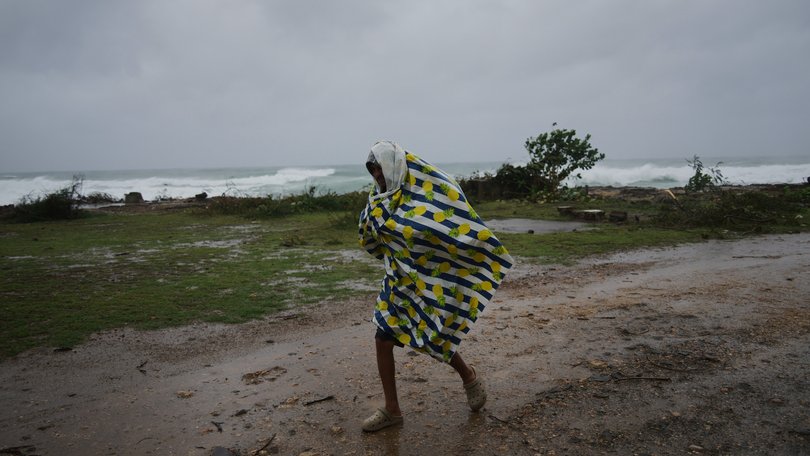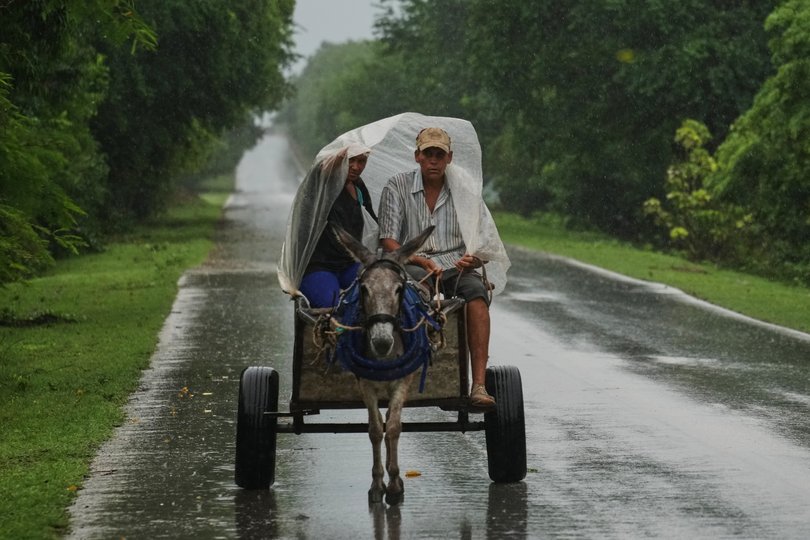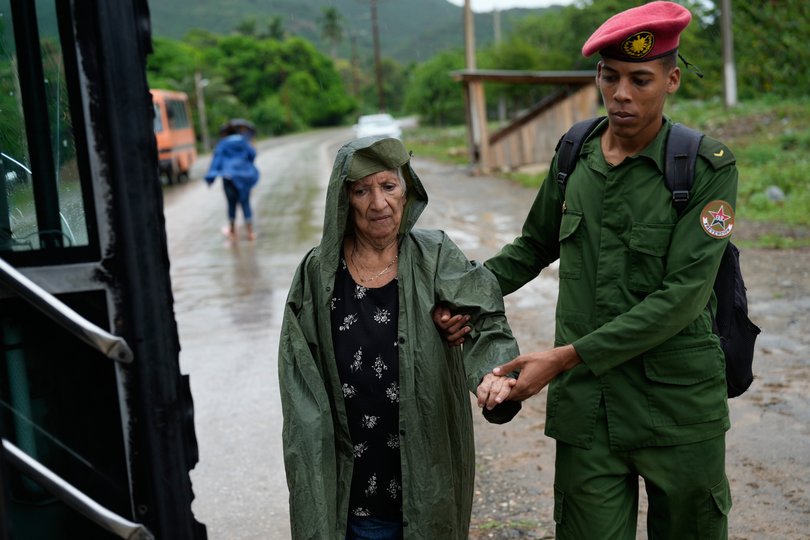After cutting a path of destruction across Jamaica, Hurricane Melissa strengthens as it heads towards Cuba

After cutting a path of destruction across Jamaica, Hurricane Melissa is forecast to hit Cuba — very likely as a Category 4 — late Tuesday or early Wednesday (local time).
The storm is poised to first reach the island’s southeast corner, possibly within the neighbouring coastal provinces of Santiago de Cuba and Guantánamo, with an onslaught of wind, rain and flash floods, said Andy Hazelton, an associate scientist at the University of Miami.
“There are a lot of mountains here,” Mr Hazelton said. “The air rises over the mountains and creates a lot of heavy rain.”
Sign up to The Nightly's newsletters.
Get the first look at the digital newspaper, curated daily stories and breaking headlines delivered to your inbox.
By continuing you agree to our Terms and Privacy Policy.The biggest island in the Caribbean, at about 780 miles long, Cuba is an easy target for hurricanes and no stranger to destructive storms. In the last 25 years, a total of 10 major hurricanes — Category 3 and above — have made landfall in Cuba, not including Melissa.
By comparison, only one major hurricane, Melissa as a Category 5 on Tuesday, has crossed over the much smaller island of Jamaica.
“Cuba is right in the centre of things, and hurricanes can come from about any direction,” said Michael Chenoweth, a historical climatologist. “Jamaica is a much smaller target than Cuba is.”
At least two Category 5 storms have hit Cuba.
Within the pantheon of major hurricanes to hit Cuba, at least two were Category 5.
Most recently, in 2017, the deadly Hurricane Irma battered the island’s northern coast with maximum wind speeds of 167 mph.
Central areas of the island recorded 10 to 15 inches of rain over three days, and Cuba’s weather agency measured a rainfall total of 23 inches at one station near the coast to the south.
The so-called 1924 Cuba hurricane, which lashed the island’s western half, is the first recorded Category 5 hurricane in the Atlantic Ocean, according to Phil Klotzbach, a senior research scientist in the atmospheric science department at Colorado State University.
Mr Klotzbach said that even though the National Hurricane Centre did not designate landfall intensities for hurricanes outside the United States before 1946, experts inferred from its track that the 1924 hurricane was a Category 5 at landfall.
“They really upped its intensity when they reanalysed the storm a few years ago,” he said.
The Great Havana Hurricane of 1846 that roared across western Cuba well before modern measurements and record-keeping is also thought by most hurricane experts to have been a Category 5 storm.
Two Category 4 hurricanes pummelled Cuba in 2008.
More recently, in 2016, Hurricane Matthew made landfall in Cuba as a Category 4 with maximum winds of 132 mph.
The year 2008 was notably bad: Cuba was hit with a double whammy of two Category 4 hurricanes, Gustav and Ike, as well as the Category 2 Hurricane Paloma.
And just last year, Hurricane Rafael arrived in the western Cuban province of Artemisa as a Category 3, dumping rain and knocking out power with sustained winds near 115 mph.
Cuba’s next big storm is Melissa.
On Tuesday evening, Melissa weakened to a Category 3 storm after exiting Jamaica and churning toward Cuba.
The hurricane centre said in its latest forecast that the storm’s centre was expected to pass near or over southeastern Cuba, an area with big national parks and populated cities including Santiago de Cuba, late Tuesday or early Wednesday.

The storm will be slightly weaker than it was in Jamaica, but the hurricane centre warned of heavy rainfall, flash flooding, landslides and damaging winds in eastern Cuba, where airports were closed and bus and train services suspended. (The capital, Havana, is on the island’s northwest side).
President Miguel Díaz-Canel of Cuba, in a video message on social media, called on people to evacuate to safe zones. The US Navy evacuated hundreds of residents from its base at Guantánamo Bay before Melissa’s arrival.

Rainfall totals of 10 to 20 inches are expected in eastern Cuba, with the wettest locations expecting up to 25 inches.
Forecasters also warned that the southeast coast could be affected by life-threatening storm surge, an abnormal rise in sea level above the predicted astronomical tides that’s caused by the force of the storm’s winds pushing water toward the storm.
The storm is arriving at a time when the country has already been struggling with power outages, and more are expected in the coming days.
This article originally appeared in The New York Times.
© 2025 The New York Times Company
Originally published on The New York Times
